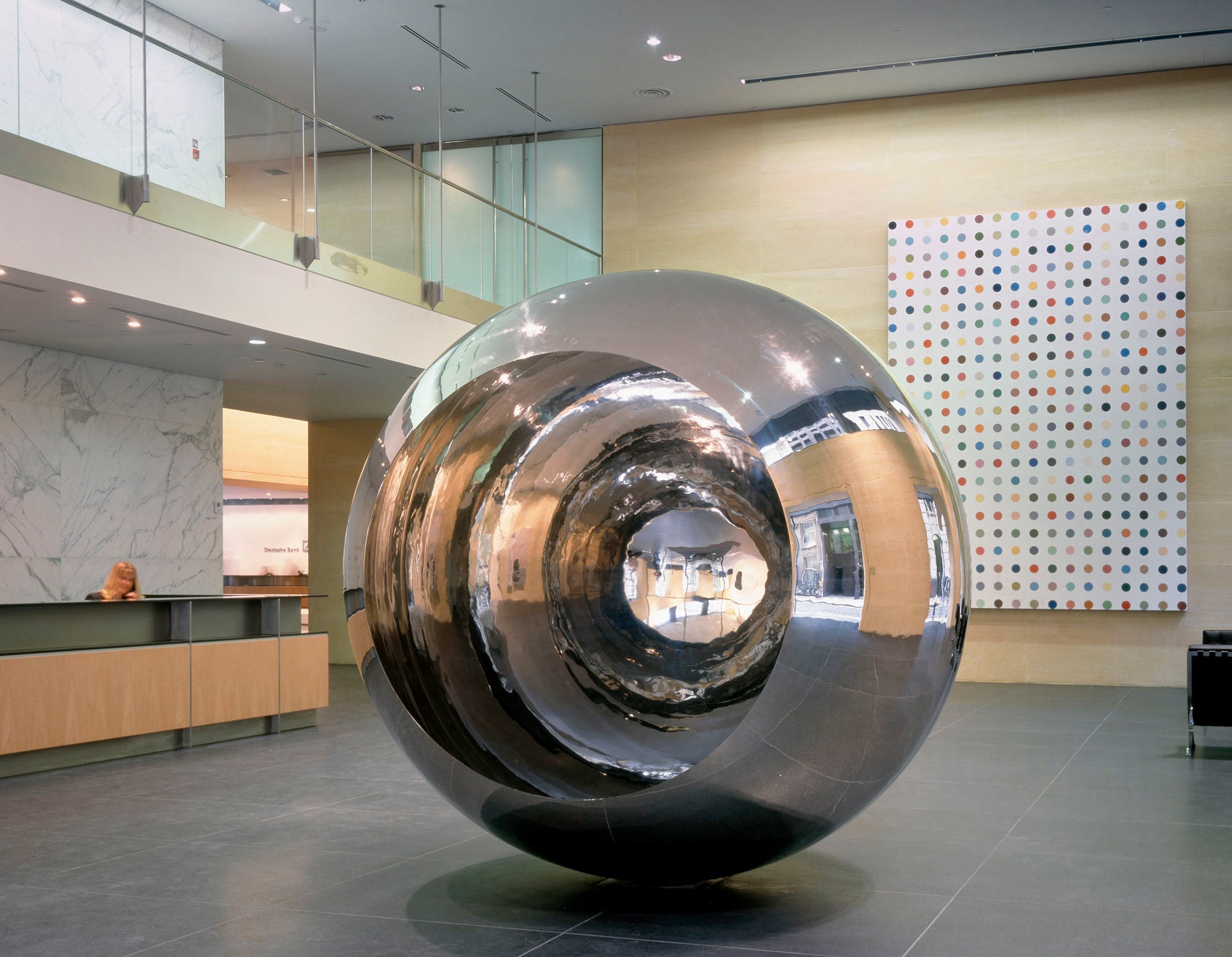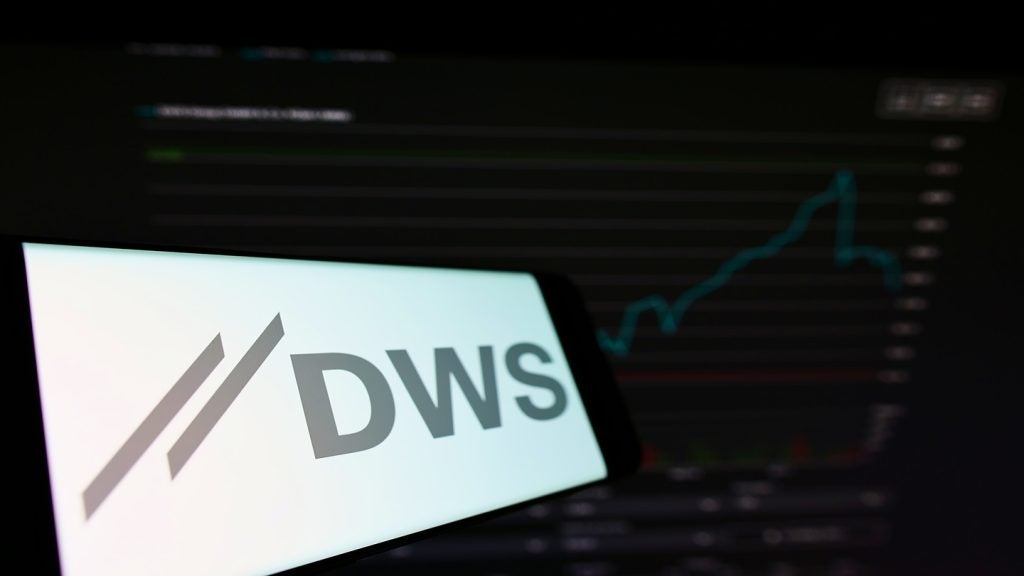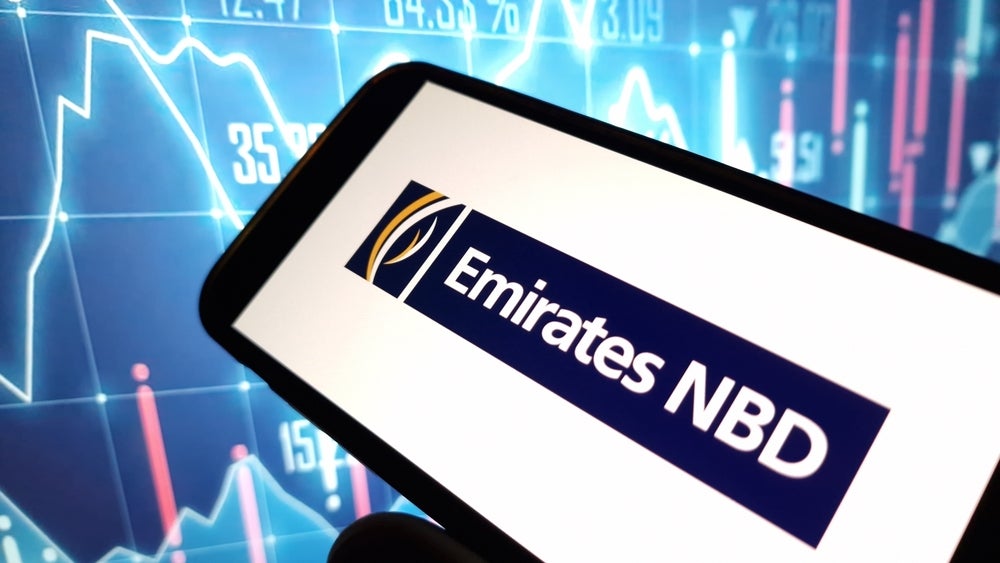Last year Abraaj, a Dubai-based private equity fund with a preference for emerging markets, went into administration. Poor returns from a number of investments spiralled until investors called the firm out over its misuse of a $1 billion healthcare fund.
Administrators were quick to flog its assets. Among them, a collection of Middle Eastern and Asian art, which was sold at auction for $5.8 million last year.
While the sale went some way to reaping back investor’s money, they were vexed: Why was a fund manager losing so much money and yet spending big on art?
Clients might ask the same question of Deutsche Bank, which holds the world’s largest corporate art collection (including the above sculpture by Anish Kapoor and painting by Damien Hirst, which stand in its London lobby).
The German bank has been mired in controversy since 2014 when it posted a huge loss. Earlier in July, it announced thousands of layoffs as part of a major business restructuring.
But the art remains, untouched by bank’s cost-cutting plans. In London, thousands left their jobs walking past works worth multiples of their salary.
Many are now asking why staff are laid off, or funds closed while corporate collections remain.
But that is a short-sighted view. High net worth clients regularly invest in art, riding the volatility of the market, so are reassured when their bank or wealth manager does so too.
Research from the ‘Knight Frank Wealth Report’ shows that 28% of UHNWIs around the world “actively collect an investment of passion”.
And why wouldn’t they? The value of art has increased 9% in the last year, according to the Report. That’s considerably better than either the S&P 500 or FTSE 100.
Deutsche says that it is now looking to strengthen its wealth management focus in Europe. Clients might, therefore, be reassured when receiving investment advice on artworks when surrounded by the stuff.
Judgment on art hanging on walls or placed in lobbies should be restrained, however, for there is another reason that companies should collect. Supporting the arts is an important philanthropic undertaking.
This support can be a lifeline to young artists. Kleinwort Hambros offers its Emerging Artist Prize to British artists under the age of 35. In Canada, RBC runs the Canadian Painting Competitions and also supports Canadian Art, a promotional body.
Some have deep routed commitments to the arts. BNY Mellon has a history of supporting London’s Royal Academy and Kleinwort Hambros the V&A.
But smaller firms are often the most passionate. J Stern & Co., a family office, recently sponsored the ‘Lost Treasures of Strawberry Hill’, which featured masterpieces from Horace Walpole’s collection.
Here, the connection was personal. “Strawberry Hill used to be the home of Horace Walpole, the son of the first prime minister”, Jérôme Stern, the co-founder of J Stern & Co., told PBI earlier in the year. “An ancestor of mine bought it in 1883 and sold it 1923.
“It was great because it covered our education [philanthropy]. Secondly, it covers the arts. And then it also had the family aspect which was nice.”







